Training and capacity building Publications
.tmb-th600x450.jpg?Culture=en&sfvrsn=f93a183d_1)
In-farm comparison trial conducted by HELVETAS-GPLP in partnership with IITA Tanzania
01/06/2018
This article explains: moisture of maize grains increased during 30-week storage in hermetic conditions; sitophilus zeamais was more predominant than Tribolium castaneum in stored maize; hermetic storage containers controlled grain damage as good as insecticide; kernel breakage before storage may accelerate insect damage during storage; no risk of low germination; etc.

Post-harvest management of banana for quality and safety assurance
28/02/2018
Guidance for horticultural supply chain stakeholders. Bananas are grown in Timor-Leste for their economic and nutritional value. A number of banana cultivars are produced by smallholder farmers mainly for domestic consumption. Ripened bananas are consumed as dessert fruit. Immature or green bananas are consumed in the cooked state and are processed into chips. Bananas provide a good source of energy.

Post-harvest management of mango for quality and safety assurance
28/02/2018
Guidance for horticultural supply chain stakeholders Mango is one of the most important and popular fruits in Bangladesh and is referred to as the “king of fruits” because of its excellent overall eating characteristics. It is consumed as a fresh fruit, in the frozen, preserved or dried forms or is processed into juices, purees, chutneys and pickles. Ripe mangoes are best eaten as fresh fruit, usually as a dessert and are used in the production of confectionery, ice cream, and bakery products.

Post-harvest management of snap bean for quality and safety assurance
28/02/2018
Guidance for horticultural supply chain stakeholders. Snap bean (Phaseolus vulgaris L.) ranks 6th as the most demanded vegetable in Sri Lanka. It is produced mostly on small farms. The peak harvest seasons for snap beans are March – April and September – December.
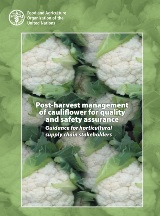
Post-harvest management of cauliflower for quality and safety assurance
28/02/2018
Guidance for horticultural supply chain stakeholders. Cauliflower (Brassica oleracea var. botrytis) is a cash crop and the number one vegetable crop in terms of production and value in Nepal. The popularity and high consumer demand for cauliflower stem from its nutritional quality and health benefits. Cauliflower contains high levels of Vitamins C and B, calcium (Ca), Iron (Fe) and phosphorus (P) and is known to have health promoting benefits.
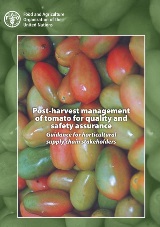
Post-harvest management of tomato for quality and safety assurance
20/02/2018
Guidance for horticultural supply chain stakeholders. Tomato (Lycopersicon esculentum Mill.) is a vegetable crop popularly consumed in Bangladesh. It is commonly used for table consumption in fresh form or as an ingredient in many cooked dishes.
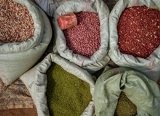
AU Commission Post-harvest Loss Management Strategy
01/01/2018
At its 23rd Ordinary Session of the African Union Assembly held in Malabo, Equatorial Guinea, in June 2014, Heads of State and Government adopted eight commitments that now make up the ‘Malabo Declaration on Accelerated Agricultural Growth and Transformation for Shared Prosperity and Improved Livelihoods’. Among the many targets that...
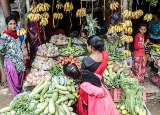
Case studies on managing quality, assuring safety and reducing post-harvest losses in fruit and vegetable supply chains in South Asian Countries
01/01/2018
Fresh fruits and vegetables contribute significantly to food and nutrition security, poverty reduction and to economic development in the countries belonging to the South Asian Association for Regional Cooperation (SAARC). Smallholders who make little use of post-harvest technologies produce most of the fresh fruits and vegetables supplied to mass markets.

Food Loss Analysis e-learning course
01/01/2018
This e-learning course introduces the FAO Case study methodology for the analysis of critical food loss points. This method focuses on revealing and analyzing the multidimensional causes of losses in selected food supply chains, identification of critical loss points, and recommendation of feasible food loss reduction solutions and strategies. It...
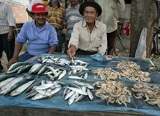
An innovative way of fish drying and smoking: FAO Thiaroye Processing Technique (FTT-Thiaroye)
15/12/2017
Introduction and trial a new cost effective method of fish smoking and drying which will reduce post-harvest losses, add value to the finished product and increase its shelf life.

Policy Measures for managing quality and reducing postharvest losses in fresh produce supply chain in South Asian countries.
01/10/2017
Smallholders and traders are key stakeholders in fruit and vegetable supply chains supplying local mass markets across South Asian countries. Training these stakeholders and introducing simple technical innovations into these supply chains can dramatically improve the quality and shelf-life of fresh produce and reduce losses, thereby generating economic benefits for...
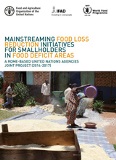
Mainstreaming food loss reduction initiatives for smallholders in food deficit areas (Phase 1)
01/07/2017
The “Mainstreaming food loss reduction initiatives for smallholders in food deficit areas” project, implemented by the Rome-Based UN Agencies (RBA) funded by the Government of Switzerland aims to improve food security and income generation opportunities through reduction of food losses in supported food grains and pulses value chains.

Reducing post-harvest losses in fruits and vegetables in South Asian countries
30/06/2017
An FAO project aimed to pilot the implementation of good post-harvest management practices to manage quality, assure safety and reduce losses in prioritized traditional fruit and vegetable supply chains with stakeholders, in order to generate evidence to support the uptake of the improved practices.

Food loss in grain value chains. Causes and recommended solutions
01/01/2017
An Infographics that illustrates the different steps along the studied value grain chains by food loss causes and recommended solutions, as a tool to support training and dissemination of good practice at field level. A joint RBA project has studied and identified the main causes and solutions for food loss and waste reduction along sorghum, beans, maize, cowpea and rice value chains in Burkina Faso, DRC and Uganda.

Technical and investment guidelines for milk cooling centres
30/06/2016
This book aims to serve as a reference and guideline document for small and microenterprises, small-scale organizations, non-governmental organizations, government agencies, the manufacturers of bulk milk coolers for small and microenterprises, and teaching and educational institutions offering courses in dairying, food sciences and technology.
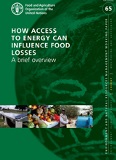
How access to energy can influence food losses. A brief overview
01/01/2016
This report focusses on understanding how access to energy is a key factor affecting the magnitude of food loss in developing countries. It identifies the main stages of the food value chain where increasing access to energy can play a dominant role in reducing food losses directly.

Developing the cold chain in the agrifood sector in sub-Saharan Africa
01/01/2016
This policy brief is based on the proceedings of the Re- gional workshop on the use of the cold chain in the development of agriculture and agro- industries in sub-Saharan Africa, organized in Yaoundé (Cameroon) in June 2012. The workshop brought together speakers from diverse backgrounds to analyse findings from...

Promoting Food Security and Safety via Cold Chains - Technology options, cooling needs and energy requirements
01/01/2016
The purpose of this concept paper is to present different existing and potential cold chains for food products and to give an overview of existing challenges and possible solutions towards better cold chain coverage, improved cold chain management and reduced food losses in developing countries.
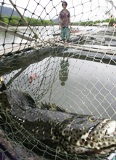
Strengthening the Performance of Post-Harvest Systems and Regional Trade in Small-Scale Fisheries: Case Study of Post-Harvest Loss Reduction in the Volta Basin Riparian Countries
01/01/2015
This report summarizes the main activities implemented under the NEPAD–FAO Fish Programme (Support to the Implementation of the Strategy for Fisheries and Aquaculture in Africa-NFFP), focusing particularly on its Output B4 “Mechanisms established for improving the performance of the fisheries and aquaculture post-harvest chain and regional trade”.
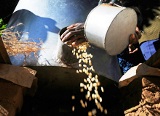
Technical manual for the construction and use of family-sized metal silos to store cereals and grain legumes
01/01/2015
The Technical manual for the construction and use of family-sized metal silos to store cereals and grain legumes was produced in the Division of Rural Infrastructure and Agro-industries (AGS) of FAO as a significant technical contribution to preventing losses in the post-harvest phase of grains and cereals.
